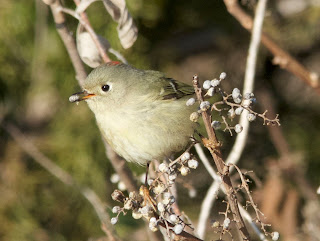The Cackling Goose looks very similar to the Canada Goose. To the uninitiated, this bird can be easily overlooked in view of the fact that it is with a group of Canada Geese, but such conditions teach us to look closely at every individual. Hidden within groups tends to be many gems.
This subspecies is most common in the southern Great Plains as well as surrounding states and staging areas in the winter. There are several subspecies: Pacific, Aleutian, Minima, Taverner, and Richardson's. With these all being migratory birds, they are observed in the coastal portions of the High Boreal Forest in the central and northwestern regions as breeding birds.
As always, there will be variations among these geese, not all will be clearly pure species or subspecies and they commonly hydridize. Facial patches (or chinstraps) and neck rings vary, as do colorations of the breast. Bill length variations are also extensive with plenty of overlap, but as a general note, the bill length will usually be shorter than the Canada Goose and the head is rounder with a difference in forehead steepness. This is what separates the Branta genus (black plumage) from Anser (gray plumage).
Cackling Goose
Boomer Lake Park, Dec. 2014
Adult birds will show a characteristic "U" on the dark uppertail contrasting well with the black, most noted when the bird is in flight. Overall, the bird is mostly brown with normal differences described above. However, shades of brown will vary, which determines which subspecies is being noted.
The shortest billed Canada Goose is the Lesser, while the longest billed Cackling Goose is the Richardson's, and both can be found sharing the same space in the center of the country. Males will tend to be longer billed than females.
Surprising through genetic structures, the Cackling Goose is quite different from the Canada Goose. Mitochondrial DNA sciences have opened up an entirely different world of information since its advent, with much more coming to light as scientific study broadens within that region. There will be more coming to light as new studies increase and specialize.
Briefly, these geese breed along tundra ponds, coastal marshes, and steep turfed slops above rocky shores. They are strictly herbaceous. Some will nest upon cliffs and others upon slightly elevated sites near water.
Another View of Cackling Geese In this Module:
https://debhirt.blogspot.com/2014/01/land-of-beauty-time-of-reverence.html






































